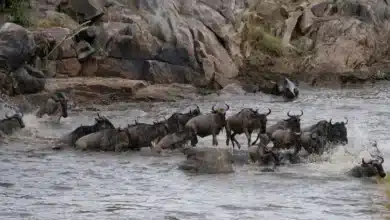Most people flee when disaster strikes.
But not Tim Samaras
Tim spent decades not just chasing storms, but racing into the heart of them. Samaras loved the chaos and smoke of bombed-out buses as well as the avalanche-like whiteness that covered the plains in Tornado Alley.
Master Disaster doesn’t only refer to a title. It’s the work of a lifetime.
Tim Samaras, a disaster expert, engineer and extreme weather scientist, made it his goal to measure the unmeasurable. Tim Samaras brought order to chaos. He searched for answers and hope where others saw destruction.
His work was not only scientific but also deeply human. Behind every disaster or storm, there are people whose lives have been ruined, their homes destroyed, and families whose lives have forever changed. Samaras’ investigations never centred on spectacle. Safety was the main concern. Understanding. Understanding.
This is the tale of a man who faced disaster with purpose, not with bravado.

The Science of the Unthinkable: The Master of Disaster
They don’t obey rules. Unexpected disasters can strike without warning, escalate quickly, and leave a trail of destruction that is difficult to explain. Samaras was convinced that even the most unpredictable of events could be decoded using the right tools and the right mindset.
He spent his entire life analysing and analyzing both man-made and natural disasters.
His tools were more than just scientific instruments; they were also extensions of his will. He hand-built some of the most advanced portable instruments in the world. These rugged, compact pods are designed to be placed in the path of tornadoes. They measure wind speed, pressure and temperature at ground level, information that no one has ever been able to capture.
His approach to man-made catastrophes, such as bombings and structural collapses, was equally meticulous. He used high-speed camera footage, forensics, and engineering expertise to determine what went wrong and how it could be avoided in the future.
Into the Heart of the Storm
Tim Samaras’s groundbreaking research on tornadoes has made him a household name. His research took him to Tornado Alley – a vast region in the middle of the United States, where geography, climate and atmospheric instability combine to create the perfect breeding grounds for the most powerful tornadoes.
Each spring, the vast plains of Texas, Kansas, Nebraska, and Oklahoma become a battlefield as the warm, moist Gulf air collides with the dry, cool Rockies air. What is the result? The result?
Samaras’ team drove thousands of miles every season to track weather systems in these flatlands, with the precision and accuracy of fighter pilots. They weren’t only filming, they were also racing to position themselves, deploy sensors and get out of the way just before the storm.
Samaras placed a probe directly in the path of an EF4 Tornado in Manchester, South Dakota. The probe recorded a 100 millibar pressure drop, the most extreme ever measured on ground level within a tornado. Samaras’s scientific achievement earned him praise from NASA, the National Weather Service and other meteorological institutes across the globe.
He didn’t do this for praise.
He said, “It’s worth collecting data if I can save one life.”
Hail, Wind, And The Hidden Killers
The headlines about tornadoes are only part of the larger, and often more sinister, picture of extreme weather.
Take, for instance. What are those seemingly harmless chunks of ice that fall from the sky? These hailstones can be as large as baseballs and shatter windows, causing billions of dollars in crop damage every year. Hailstorms can be so powerful in some areas of the Midwest and Great Plains that they damage steel roofs and strip the bark from trees.
Samaras did not study hail for its drama, but rather for its danger. While hail may not have the same catastrophic effects as a tornado, its unpredictable nature, speed and sheer force can be deadly. In an experiment, he used high-speed cameras that captured hail impact in slow-motion. This revealed the energy packed inside each frozen projectile.
These visualisations were not only fascinating, but they were crucial for designing better fuselages, windows, and protective shields.

Avalanches, Mountain Perils
Disasters in the mountains can strike silently.
Avalanches are often caused by a small mistake, such as a misplaced step. A skier causes a crack to appear in the snowpack. Within seconds, thousands upon thousands of tons of powder cascade down a mountain.
Samaras has worked with mountain rescue teams, such as in the Colorado Rockies or the Swiss Alps. He analysed avalanche triggers, terrain layers, and stability of avalanche sites. He used drones to map slopes and reviewed rescue procedures. He also helped design early warning systems that alerted skiers and climbers about potential dangers.
The mountain geography has a significant impact on how avalanches behave. South-facing slopes are warmer. The wind can cause snow to be deposited unevenly on ridges. The risk of death increases when terrain traps such as gullies or tree wells are present. Samaras knew that avalanche safety meant knowing the terrain as well as the snow.
He said that “Nature whispers, before it roars.” Just learn to listen.
Manmade Chaos: Bombings, collapsed cities
Not all disasters are caused by the skies.
Samaras also had to deal with the grim task of examining human-made disasters, bus bombings and collapsed buildings. They were disasters that not only destroyed, but also violated. These disasters were the result of conflict, negligence and malice.
Samaras was called in to investigate the blast pattern after a terrorist bombing occurred in a major European City. Samaras used physics, digital modelling, and high-speed imaging to map the explosion’s epicentre, blast radius, as well as the distribution of shrapnel. His findings were not just for academic purposes; they influenced counter-terrorism protocols and vehicle armour design around the world.
He investigated buildings that collapsed, tragedies caused by outdated materials or poor construction. He understood that the failures were not just structural, whether it was an earthquake or a crane collapse in Dubai. They were humans.
The most difficult part of these investigations was usually interviewing survivors and hearing their stories.
Geography isn’t just a backdrop; it’s also the script
Samaras never treats geography as a mere backdrop. It is the cause of every catastrophe, the canvas and the script.
Why does a storm form in one area and not another? Why is a city on soft soil more vulnerable to earthquake damage than a city on rock? Why does the bend of a canyon cause wind to be blown at hurricane force?
He saw the Earth as an ever-changing, dynamic system, one that was capable of being beautiful, violent or heartbreakingly indifferent.
He studied how the topography of places such as Japan’s tsunami-prone coasts channelled energy into narrow valleys and amplified destruction. He studied the impact of low-lying terrain and levees in New Orleans on Hurricane Katrina. He studied how the volcanic terrain of Iceland and glacier melting could cause sudden, deadly flooding known as jokulhlaups.
To him, every disaster was a combination: geography, timing and infrastructure.
The Final Storm
Tim Samaras and his son Paul, as well as Carl Young’s colleague, died on May 31, 2013, while tracking a severe tornado near El Reno in Oklahoma. This was the widest tornado recorded, measuring 2.6 miles.
The experience was a reminder that understanding disasters often involves risk. The tornado shifted suddenly and unpredictably–something even Tim, with all his expertise, couldn’t have foreseen. The data collected on that day helped to create new storm models and safety protocols that are still used today.
The tragedy sent shockwaves throughout the scientific and meteorological communities. Amid the mourning, there was also a deep respect for a man who died doing what he loved in the service of knowledge and humanity.
The Legacy of a Life Lived on the Edge
Tim Samaras’ legacy continues today through research centres, foundations and scholarships dedicated to advancing extreme weather science. His work has inspired an entire new generation of storm chasers and engineers who combine passion with precision.
Samaras was different because of his empathy. He was not chasing adrenaline, but understanding. He didn’t want to dramatise disasters, but rather to demystify them. To make the world safer, not just more informed.
His videos are still used in schools and universities to teach tornado dynamics and impact analyses. His models are still being used in emergency response units to train personnel. In the minds of storm chasers, his methodical, quiet style is still the gold standard.

Final Thoughts on Measuring The Immeasurable
Disaster,
Nature is unpredictable. It tears away the illusion of security and exposes the fragility of the human condition. People like Tim Samaras show us that we can still seek understanding even when chaos is present. We can prepare. We can prepare.
He said once, “You cannot stop a hurricane, but you can learn how it works.” If you understand how it works, you will be able to survive.
Master of Disaster means more than just a label. It’s more than a label. A discipline. Refusing to give in to fear.
Tim Samaras found answers to questions in every cloud formation, wall collapse, broken beam, or rising swell. He devoted his entire life to finding the answers.
The next time you see or hear thunder, think about this: Someone stood under that sky, not to run but to ask Why?
Maybe, just maybe, they made the world a bit safer for us.




